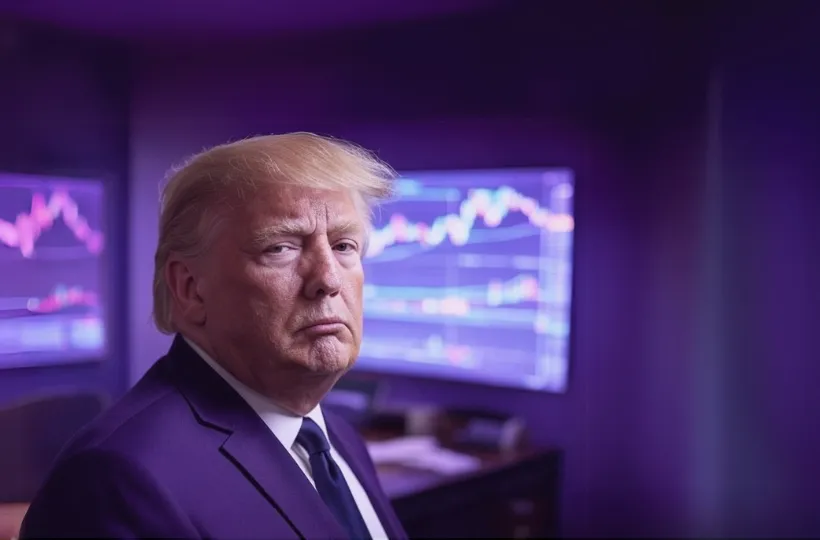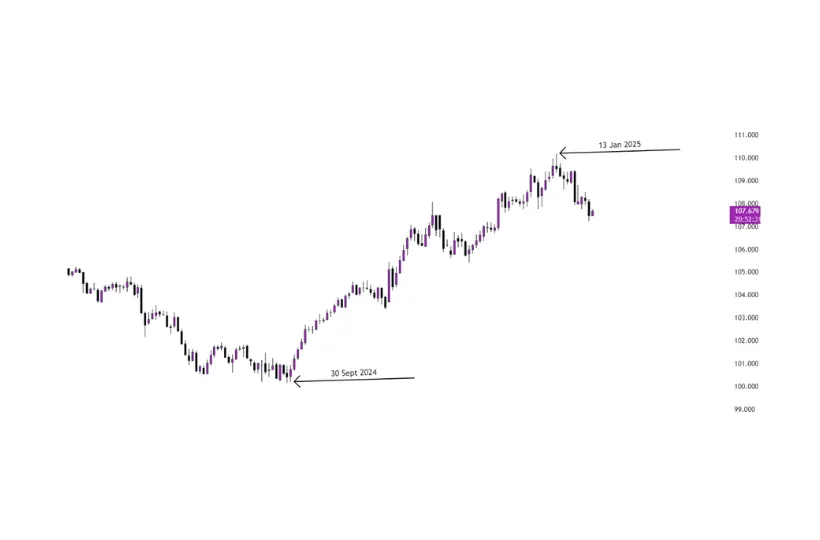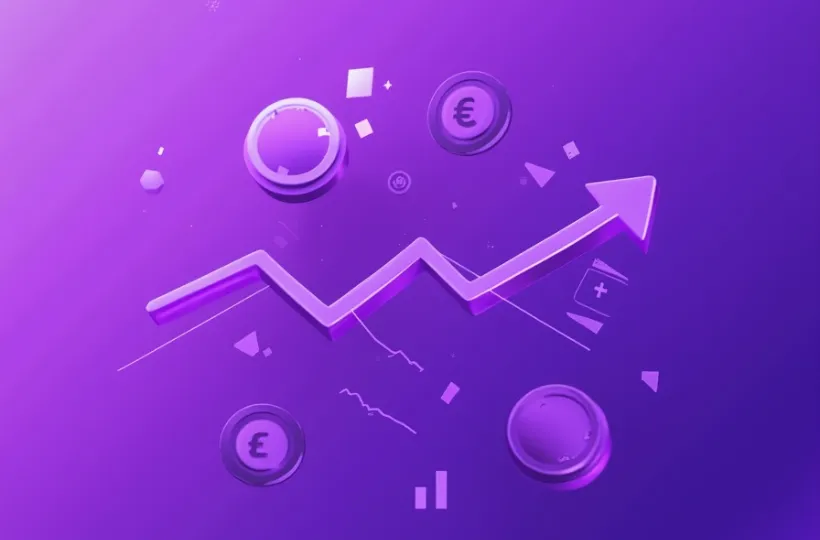Trump’s Return: What Forex Traders
Need to Know About the New
Administration

Read Time: 6 minutes
Donald Trump’s return to Office as the 47th President of the United States marks a significant political and economic shift, creating both opportunities and challenges in the forex market.
Trumps second-term agenda, marked by aggressive trade policies, tax reforms, and deregulation, has the potential to impact global markets in complex ways, especially the foreign exchange market. Fear not; there will be plenty of opportunities to accompany any disruptions that the Trump Administration will bring.
One of Trump’s most critical economic agenda’s is his renewed focus on tariffs. As during his first term, Trump has emphasised targeting China, with plans to raise tariffs on Chinese imports by 10–15%, ultimately increasing tensions between the two nations.
Why does this matter?
China’s economy has direct and indirect influences on markets, primarily through global trade. In 2024, China's foreign trade reached new heights, with total goods imports and exports amounting to 43.85 trillion yuan (approximately USD $6.1 trillion), marking a 5% increase from the previous year. Exports grew by 7.1% to 25.45 trillion yuan, while imports saw a 2.3% rise to 18.39 trillion yuan.
The trade surplus expanded significantly, reaching a record $992 billion, driven by a surge in exports, particularly to the U.S. So, you can imagine how Trump’s focus on tariffs could affect this.
Other proposals include broad tariff hikes, with some extreme scenarios suggesting across-the-board levies of up to 10% or a staggering 60% on Chinese goods. Such moves, while aimed at protecting American industries, carry substantial implications for global trade flows – which will of course affect currency rates.
The U.S. dollar, often a safe-haven currency as we know it, has provided an impressive bull-run recently;

Figure 1-DXY (US Dollar Index) Daily Chart
There are essentially two scenarios:
A weaker USD
In his first term as US President, Trump openly said the dollar (USD) was too high. And now, in his second term, he’s singing the same tune. This could provide some fantastic opportunities for us forex traders – especially when currencies such as the AUD and NZD are severely undervalued.
Continued dollar strength
We could see further strength if global investors react to heightened uncertainty and anticipated inflationary pressures.
Overall, it’s likely that continued tariff increases will disrupt supply chains and weigh on U.S. economic growth, potentially weakening the dollar in the long term.
In addition to trade, Trump’s fiscal policies have the potential to impact currency prices. The extension of the 2017 tax cuts, along with potential new tax breaks, is expected to stimulate economic growth in the short term but could also widen fiscal deficits, already exceeding 7.5% of GDP. Higher government borrowing to finance these deficits may push up U.S. Treasury yields, attracting foreign capital and boosting the dollar. Yet, sustained fiscal imbalances could lead to long-term concerns over debt sustainability, ultimately eroding confidence in the greenback.
The Trump Administration’s approach to deregulation is yet another factor likely to influence forex prices. Trump’s plan to roll back Biden-era regulations across sectors such as energy, finance, and manufacturing aims to reduce costs for businesses and encourage investment. This deregulation, in addition to tax cuts, could lift business confidence and support equity markets, creating a risk-on environment. In such scenarios, higher-yielding currencies such as our Australian dollar and the Canadian dollar could potentially benefit from improved sentiment and rising commodity prices.
How to Trade Trump 2.0
Monetary and Fiscal Policy Signals
So far, Trump has been on a war path signing off executive orders and pushing to make change. Given that currency markets are influenced by macroeconomic and geopolitical events, it’s imperative to keep an eye on the headlines for potential shifts in monetary and fiscal policies. In doing this, we can stay one step ahead.
Look for Hedging Opportunities
Trump’s presidency previously brought unexpected shifts in international relations, creating geopolitical uncertainty that could impact the forex market; during such times, safe-haven currencies such as the CHF or JPY are typically reliable options. Additionally, if Trump reinstates policies that favour U.S. energy independence, oil-exporting nations such as Canada (CAD) or Russia (RUB) may see increased currency volatility tied to changes in commodity markets.
Be Prepared and Adapt
Trump’s criticism of the Federal Reserve for maintaining high interest rates during his first term suggests potential attempts to influence monetary policy, making the Fed’s reactions critical for USD movements. Policies promoting growth or supply-side inflation could drive rate adjustments, adding to forex market volatility. As traders, we need to be prepared – we know Trump is a bit of a loose cannon, but we also need to adapt to changes in market structure and macroeconomics.
News and Risk Management
Taking all of this into account, we traders need to keep one eye on the news headlines, and one eye on the markets. Stay up-to-date with major news events and avoid trading within close proximity of them, reducing exposure on any open trades.
In the months ahead, expect volatility and surprises. Trump has never been more motivated in improving things for the United States. Given that the greenback is the most important currency to watch, we traders need to be prepared for anything that he throws at us. Traders need to embrace the volatility, identify trends, and keep an eye on the macro-economic influencers that ultimately drive the pricing of currencies.
We provide our clients with an economic calendar and other tools to succeed in the markets – find out more by clicking here.
We’ll never share your email with third-parties. Opt-out anytime.
Relevant articles

How Global Interest Rate Divergence Is Shaping Forex Opportunities in 2025
